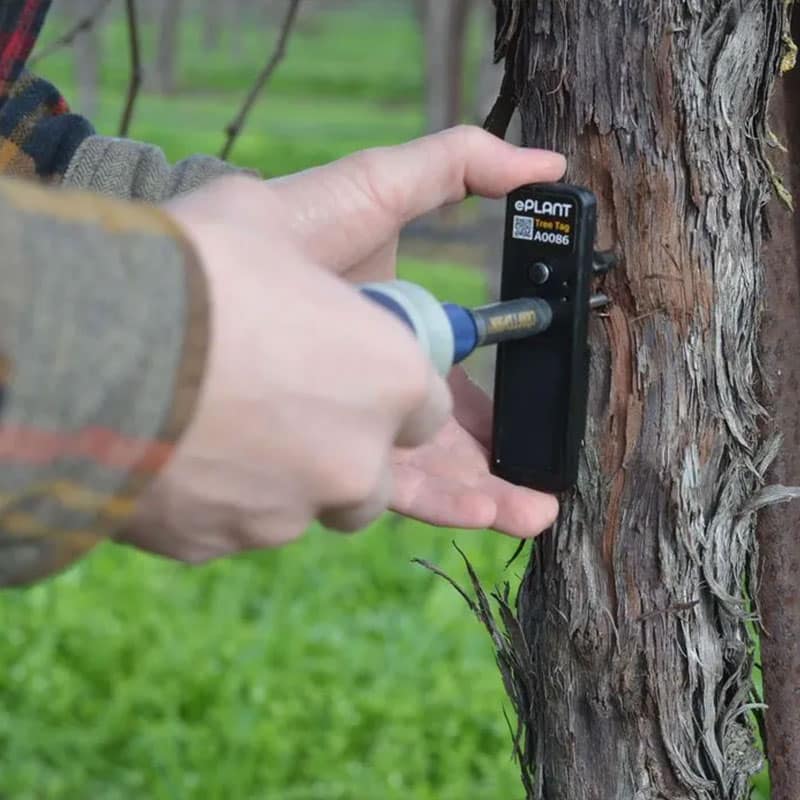Do you know what the WHO guidelines for environmental monitoring are? Environmental monitoring (EM) is crucial for ensuring the safety and quality of various products, especially in sensitive areas like pharmaceutical manufacturing.
The World Health Organization (WHO) sets global standards for safe and effective medicines, and proper EM is a cornerstone of this mission. This article explores the key principles and recommendations outlined in the WHO guidelines for environmental monitoring in different contexts.
Read also: Remote monitoring solutions – 3 main applications
What is WHO?
Before discussing the WHO guidelines for environmental monitoring, we must understand what WHO is. The World Health Organization (WHO) is basically the United Nations’ health agency.

Here’s a breakdown of WHO’s role in society:
- Universal health coverage: WHO advocates for everyone around the world to have access to the health care they need.
- Public health monitoring: They monitor health risks around the globe, like disease outbreaks.
- Health emergency response: When health crises hit, WHO helps coordinate the international response.
- Promoting health and well-being: Their goal is to improve overall health for everyone, from pregnancy all the way through old age.
Why is environmental monitoring important?
- Ensures product quality and safety: Monitoring helps identify and minimize contamination risks, especially in critical areas like pharmaceutical manufacturing. This protects consumers from harm.
- Compliance with regulations: Following WHO guidelines for environmental monitoring helps companies meet regulatory requirements for their industry.
- Continuous improvement: A risk-based approach allows manufacturers to adapt their monitoring programs based on data and identified risks, fostering an ongoing process of improvement.
- Public health benefits: This goes beyond just pharmaceuticals. In healthcare facilities, it helps prevent the spread of infections, and in water treatment plants, it ensures clean drinking water. In various sectors, monitoring contributes to a healthier environment for the public.
- Worker safety: Monitoring helps identify and address potential hazards in workplaces, promoting worker well-being.
- Environmental protection: In some industries, monitoring helps track and reduce emissions of pollutants into the environment.
WHO guidelines for environmental monitoring: a risk-based approach
The WHO emphasizes a risk-based approach to environmental monitoring. This means tailoring the monitoring program to the specific risks associated with the product and its manufacturing process. Key factors considered include:
- Product Type: Sterile products necessitate stricter monitoring than non-sterile ones.
- Manufacturing Process: Aseptic manipulation processes require more intensive monitoring compared to those with lower contamination risks.
- Room Classification: The WHO guidelines reference ISO 14644 standards for cleanroom classification. Higher air cleanliness levels demand more frequent monitoring.

Elements of an effective monitoring program
The WHO guidelines outline several key elements for an effective environmental monitoring program:
- Program Design:
- A documented program outlining the monitoring strategy, including locations, frequency, and parameters to be monitored.
- A risk assessment to identify critical areas and processes requiring the most stringent monitoring.
- Selection of appropriate monitoring methods based on the parameters of interest (e.g., air sampling, surface swabbing).
- Establishment of alert and action levels for each parameter. These levels define acceptable limits for contamination, and exceeding these triggers corrective actions.
- Monitoring Parameters:
- Microbial Monitoring: Detecting the presence and types of microorganisms in the environment, including monitoring air, surfaces, and personnel.
- Non-viable Particulate Monitoring: Measuring the concentration and size of airborne particles. High levels of particles can indicate potential contamination risks.
- Environmental Conditions: Monitoring factors like temperature, humidity, and pressure differentials that can impact product stability and microbial growth.
- Monitoring Methods:
- Airborne Microorganisms: Techniques like active air sampling (using air samplers) and settle plates (measuring airborne microorganisms landing on a surface over time) are employed.
- Surface Microorganisms: Swabbing surfaces with sterile swabs to collect samples for analysis.
- Non-viable Particulates: Using particle counters to measure particle size and concentration.
- Environmental Conditions: Utilizing calibrated instruments like thermometers, hygrometers, and pressure gauges.
- Data Management and Corrective Actions:
- Implementing a system for recording, analyzing, and trending monitoring results.
- Establishing procedures for investigating deviations from alert and action levels.
- Taking corrective actions to address identified contamination sources and prevent future occurrences.
- Reviewing and updating the monitoring program based on ongoing data analysis and risk assessments.
Why your business should follow the WHO guidelines for environmental monitoring
Following WHO guidelines for environmental monitoring offers numerous benefits:
- Enhanced Product Quality and Safety: Implementing a robust monitoring program minimizes the risk of contamination, ensuring product quality and protecting public health.
- Compliance with Regulatory Requirements: Adherence to WHO recommendations helps meet regulatory requirements for pharmaceutical manufacturing.
- Continuous Improvement: The risk-based approach fosters continuous improvement by allowing for adaptation of the monitoring program based on data and changing risks.
Additional considerations
Beyond the core WHO guidelines for environmental monitoring, several additional considerations are crucial for a comprehensive environmental monitoring program:
- Personnel Training: Proper training for personnel on aseptic techniques and hygiene practices is vital to minimize human contamination during production.
- Disinfection and Cleaning Procedures: Implementing effective disinfection and cleaning protocols helps maintain a clean and controlled environment.
- Validation and Calibration: Regularly validating monitoring equipment and calibrating instruments ensures the accuracy and reliability of collected data.
Environmental monitoring is crucial beyond just food And pharmaceuticals
Here are some advantages of the WHO guidelines for environmental monitoring for other segments besides pharmaceuticals and food:
Healthcare facilities
- Infection Control: Monitoring helps identify and prevent the spread of hospital-acquired infections (HAIs) in hospitals, clinics, and other healthcare settings. By tracking bacteria and viruses in the environment, facilities can target cleaning and disinfection efforts more effectively.
- Patient Safety: Monitoring air quality can help ensure proper ventilation to reduce exposure to allergens and irritants, improving patient comfort and recovery.
Electronics manufacturing
- Product Quality: Monitoring airborne particles like dust can help prevent defects in sensitive electronic components. This reduces production costs and ensures product reliability.
- Yield Optimization: By identifying sources of contamination, manufacturers can improve production yield and minimize product waste.
Water treatment plants
- Drinking Water Safety: Monitoring water quality throughout the treatment process helps ensure clean and safe drinking water for consumers. This includes detecting potential contamination from bacteria, viruses, and chemicals.
- Process Optimization: Monitoring helps optimize treatment processes by identifying areas where adjustments might be needed to ensure consistent water quality.
Cleanrooms (beyond pharmaceuticals)
- Research Laboratories: Maintaining a sterile environment is crucial for scientific research, especially in fields like biotechnology and genetics. Monitoring helps ensure the integrity of experiments and prevent contamination of samples.
- Medical Device Manufacturing: Similar to pharmaceuticals, monitoring in cleanrooms ensures sterility of medical devices, minimizing the risk of infections during surgery or other procedures.
Building management
- Indoor Air Quality (IAQ): Monitoring air quality in buildings can help identify pollutants like mold, allergens, and volatile organic compounds (VOCs) that can impact occupant health and comfort.
- Energy Efficiency: Monitoring temperature and humidity can help optimize building systems for energy efficiency and prevent unnecessary energy consumption.
Overall benefits
- Improved Public Health: Environmental monitoring in various sectors can contribute to a healthier environment and reduce exposure to harmful contaminants for the general public.
- Enhanced Worker Safety: Monitoring helps identify and mitigate potential hazards in workplaces, promoting worker safety and well-being.
- Environmental Protection: In some industries, monitoring helps track and reduce emissions of pollutants into the environment.

By implementing environmental monitoring programs in diverse sectors, we can achieve a wider range of benefits, ensuring product quality, public health, and environmental protection.
How can we help you?
We are here to help you on following the WHO guidelines for environmental monitoring Datanet IoT Solutions leverages the power of the Internet of Things (IoT) to provide remote environmental monitoring solutions for businesses. Our self-powered devices and gateways allow you to track key environmental factors and monitor your assets wirelessly.
Datanet offers a variety of devices to suit your specific needs. Here are a few highlights:
- ePlant TreeTag Starter Kit (EPTSK02-OD-EA-2S): This kit is designed for monitoring the health of trees.
- Hawk: This versatile device can be customized for various applications.
- Remora3: This device is ideal for tracking mobile assets.

Expert recommendations
Choosing the right environmental monitoring device can be overwhelming. Datanet’s team of experts can help! Simply tell us your needs, and we’ll recommend the perfect solution for your application.
In addition, here are some potential benefits of using Datanet IoT’s solutions:
- Improved decision-making: Real-time data allows for informed decisions regarding environmental management and asset tracking.
- Reduced costs: Early detection of issues can help prevent costly problems.
- Increased efficiency: Optimize processes and resource allocation based on environmental data.
- Enhanced sustainability: Monitor and manage your environmental impact for a greener future.
Datanet IoT Solutions empowers businesses to take control of their environmental monitoring and asset tracking needs.







